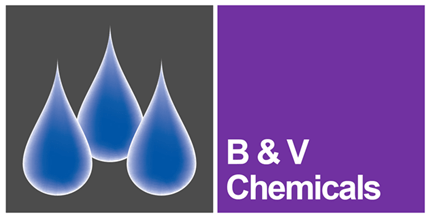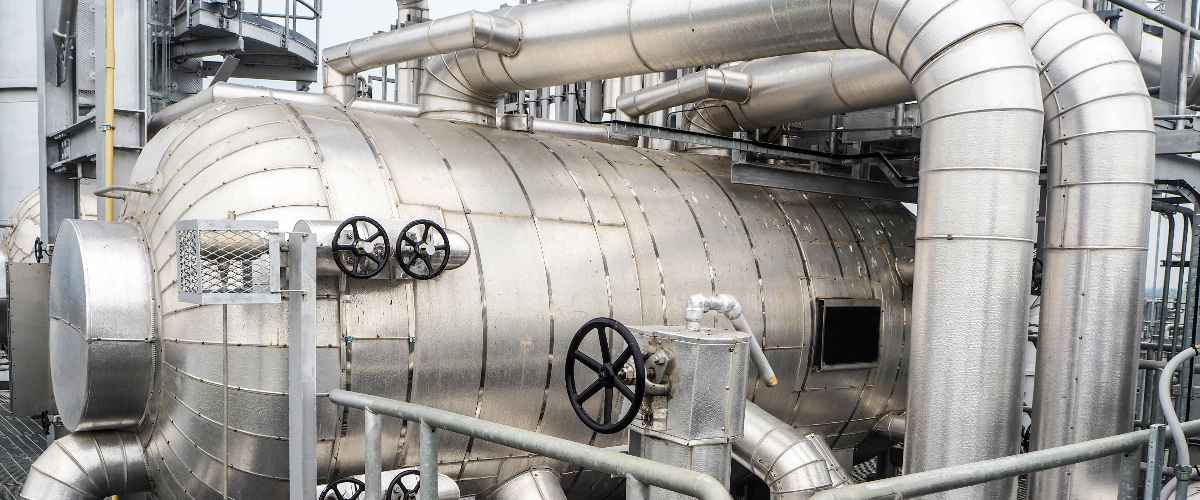RLT 20F is a non-amine filming corrosion inhibitor. It is a non-hazardous, aqueous preparation of a specialised fatty acid that forms a stable emulsion and protects against corrosion. Added continuously to the steam boiler, it goes wherever the steam goes.
When condensation occurs, to produce liquid water, part of the molecule enters the water but some parts do not, effectively creating a “non-wet” coating around the water. This prevents the water coming directly into contact with the metal surfaces and dramatically reduces the impact of contaminants in the steam in terms of corrosion. It’s a similar mechanism to filming amines – but this formulation is not an amine.
In this blog post, we highlight the benefits of RLT 20F.
1. It’s non-hazardous
The material has low toxicity and is biodegradable when ultimately released to the environment. It is approved by the FDA for use in steam rising raising plants where the steam contacts food. It is not amine based, like many of its competitors. It is approved under the FDA up to a maximum of 20ppm product in the steam.
2. It acts as an anti-corrosion agent in the steam system
On softened water fed boilers, the alkalinity in the original feed to the softener remains in the softened water as sodium carbonate and bicarbonate. On entering the boiler, much of it (depending on pressure and temperature) breaks down into carbon dioxide and sodium hydroxide. This gives ‘free-issue’ caustic in the boiler, which can be very beneficial, but 80+% of the alkalinity is likely to form CO2 and will be stripped from the water and pass into steam.
Where the steam condenses, the CO2 re-enters the water, forming H2CO3 (carbonic acid). This can result in the condensed steam (without carryover) having a significant conductivity and an acidic pH below 4.5. The acidity can lead to attack of the metals in the system, resulting in early failures of the steam pipes, steam traps, heat exchangers/condensers and condensate lines.
When RLT 20F is added, the ‘wetting’ characteristics of the condensate are altered and the low pH water is isolated from the metals, hence the attack is counterbalanced. In addition, where there is oxygen ingress (e.g. in condensers below atmospheric pressure), the product gives protection against oxygen attack by the same mechanism.
3. It reduces fouling in the boiler
Continuing the point above, if the corrosion rate is reduced, there are less corrosion products (dissolved iron and copper) released. Less in the condensate, less returned to the hotwell, less feed to the boiler, and less to be able to settle or electroplate out and cause fouling or corrosion pustules in the boiler(s).
4. It’s easy to handle versus competitor products
Filming amines are well known, as dispersions, to ‘split’ and be difficult to pump, often blocking pumps and/or dosing lines and nozzles. This leads to so-called ‘gunking’. RLT 20F has low viscosity and is a uniform product, so pumping and handling is easy.
5. It’s compatible with all feed equipment
Compatible with stainless steel, leaded brass, PVC and Polyethylene for tanks and pipes. EPDM (Ethylene Propylene-Di-Ene-Monomer) and Viton as gasket materials. It is not compatible with carbon steel.
Summary
RLT 20F is a non-hazardous and biodegradable aqueous preparation. Approved by the FDA, it acts as an anti-corrosion agent in steam systems, protecting metal surfaces from corrosion caused by contaminants. It also reduces fouling in boilers and is easy to handle compared to competitor products, offering compatibility with various feed equipment materials.
For further information on RLT 20F or any other chemicals from our steam boiler range please contact our technical team.
Read more from our steam boiler blog series:
- Why do we use chemicals in steam boiler water treatment?
- What are the Steam Boiler Water Treatment Standards to follow?
- Boiler water testing in soft water fed boilers
- Boiler water testing in demin water fed boilers
- Alkaline boil out of new boilers using C32SPC
- The use of oxygen scavengers in steam boilers
- Programming return line treatments in condensate systems






